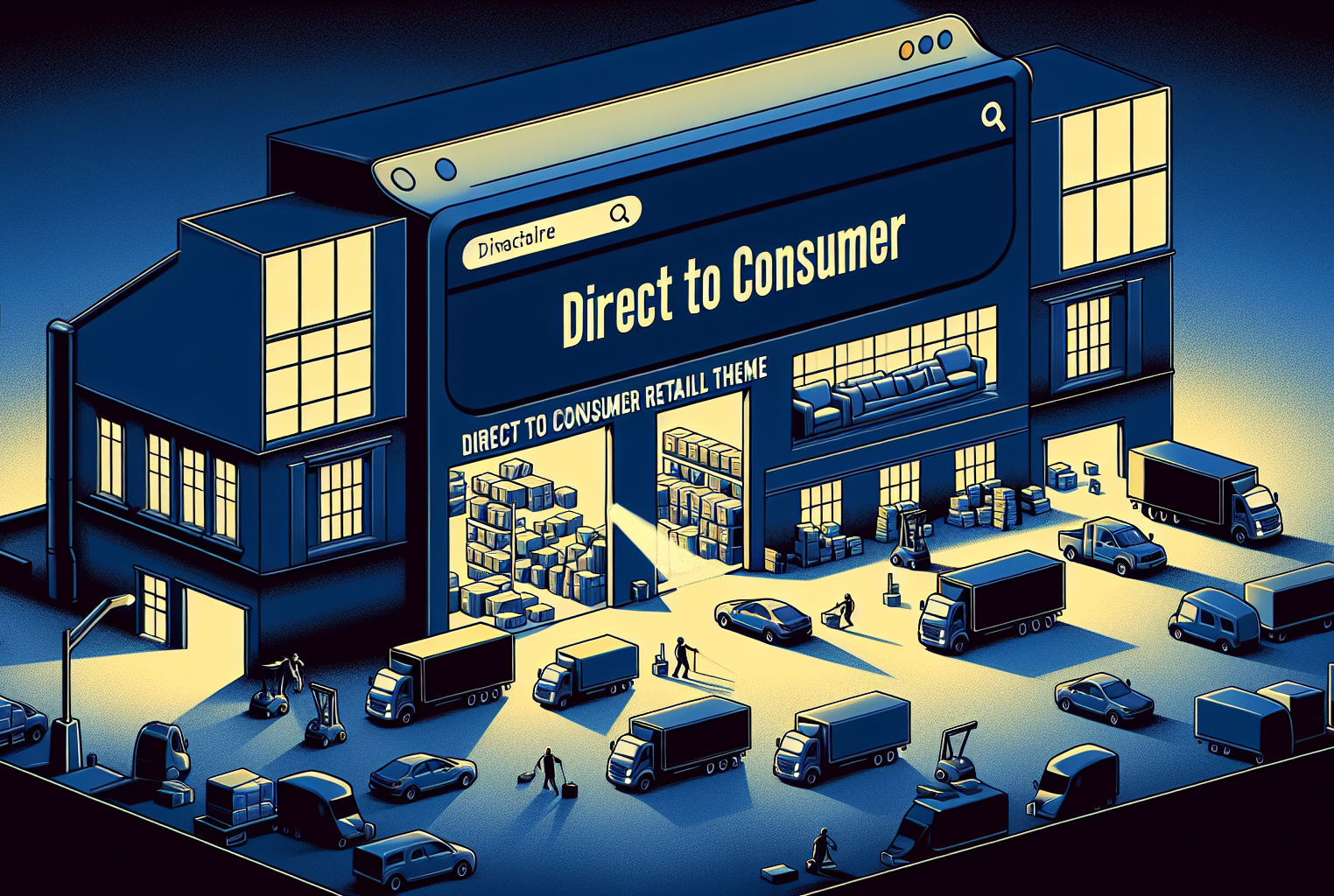
Revolutionising DTC: Delivering the Goods
Direct-to-Consumer (DTC) marketing represents a seismic shift in retail dynamics, especially for those involved in home and garden sectors in the UK. Traditional retail relied heavily on distribution channels, middlemen, and physical storefronts, creating layers of complexity that increased prices while diluting brand messaging. DTC promises a more streamlined approach, where brands sell directly to consumers via their online platforms, bypassing traditional retail structures altogether. This not only reduces costs but empowers brands to cultivate a stronger relationship with their customers.
The DTC model gained traction during the pandemic when consumers turned to online shopping for their home and garden needs. For instance, brands like Ferm Living and Graham & Green thrived by leveraging their DTC channels, providing stylish, custom products that directly fulfilled consumer cravings. In contrast to traditional retail, which often doesn’t engage customers until a product hits the showroom floor, DTC allows brands to engage customers earlier in the decision-making process.
Take Made.com, for instance, which started with a brilliant, disruptive DTC model that garnered massive attention and rapid growth. The concept was simple: sell high-quality, design-y furniture directly to consumers, bypassing the usual cumbersome supply chain. Customers were initially willing to accept long wait times for lower prices, effectively cashing in on the thrill of waiting for something special. But there are lessons wrapped up in Made.com’s rollercoaster journey. Despite a noble vision and early success, the brand ultimately folded due to its inability to adapt—to shift from a low-inventory model to a scale reminiscent of a traditional retailer.
The company’s downfall illustrates a crucial DTC pitfall: as brands grow, they risk losing the very principles that made them unique. The temptation to bulk buy inventory undermined their agile origins, frustrating customers used to longer waits for lower prices. Instead of keeping costs down, they engaged in the wild game of speculation, only to tumble headfirst into a supply chain nightmare worsened by the pandemic.
It’s a cautionary tale for UK marketers: the pivot to DTC must be well-considered and strategic. If you’re entering this space, start with a strong understanding of your customer base. Consider brands like Dollar Shave Club in the U.S. which mastered the DTC model by creating an appealing subscription structure that promises not just convenience but also a unique brand experience. They cut through the clutter of traditional retail by delivering not just razors but a sense of belonging, a community.
Turning back to the UK, what makes for successful DTC strategies is a relentless focus on the consumer journey. Understanding customer needs, evaluating purchasing behavior, collecting feedback, and contending with the chaotic nature of supply chains are essential to navigate DTC waters successfully. Additionally, brands need to maintain agile operations and innovate continuously—invest in technology that fosters a direct relationship with your consumer, from personalization to variety.
Remember, the essence of DTC isn’t just selling—it’s about branding and storytelling. Many brands can showcase their personality through online channels, allowing their x-factor to shine through. This human connection is vital and must inform every decision you make, from product offerings to communication strategies.
As we advance, brands also need to consider sustainability in their DTC efforts. Today’s consumers are more conscious of where and how their products are made. Integrating eco-friendly practices could enhance brand appeal, foster loyalty, and create a competitive edge.
With the retail landscape shifting, are you ready to embrace the opportunities that a direct-to-consumer model offers? The future isn’t waiting for you. Embrace DTC, but tread carefully—ensure that your methods don’t mimic those of traditional retail that left you behind in the first place.
In conclusion, as UK home and garden marketers embrace the DTC model, they must remain vigilant and embrace agility. The principles that drive DTC success are straightforward but require an unwavering commitment to innovation, adaptability, and consumer engagement. As we navigate toward this new retail paradigm, one question looms: Are you prepared to reshape your approach before the market dictates your fate just like it did for Made.com?
-
 14.12.2021|Structure and hierarchy drive the buyer journey from awareness to conversion. The human brain wants a fast experience, or one that feels fast. If the look and feel of your website is getting in their way, they’ll bounce somewhere else to spend their money.
14.12.2021|Structure and hierarchy drive the buyer journey from awareness to conversion. The human brain wants a fast experience, or one that feels fast. If the look and feel of your website is getting in their way, they’ll bounce somewhere else to spend their money. -
 27.06.2024|Navigating the complexities of a marketing budget is more critical than ever. In her insightful article, Beth Moore breaks down how to invest wisely, aligning your spending with both seasonal trends and user behaviours.
27.06.2024|Navigating the complexities of a marketing budget is more critical than ever. In her insightful article, Beth Moore breaks down how to invest wisely, aligning your spending with both seasonal trends and user behaviours. -
 17.05.2021|What was once a cloak and dagger practice of keyword stuffing, cloaking and PBNs, SEO is now, or should be, an everyday discipline of the modern marketer.
17.05.2021|What was once a cloak and dagger practice of keyword stuffing, cloaking and PBNs, SEO is now, or should be, an everyday discipline of the modern marketer.
We have a lot to talk about.
ScrapbookDoor4 opinions and insight - our articles features and ramblings.
We explore performance marketing, AI, communications and optimisation.















